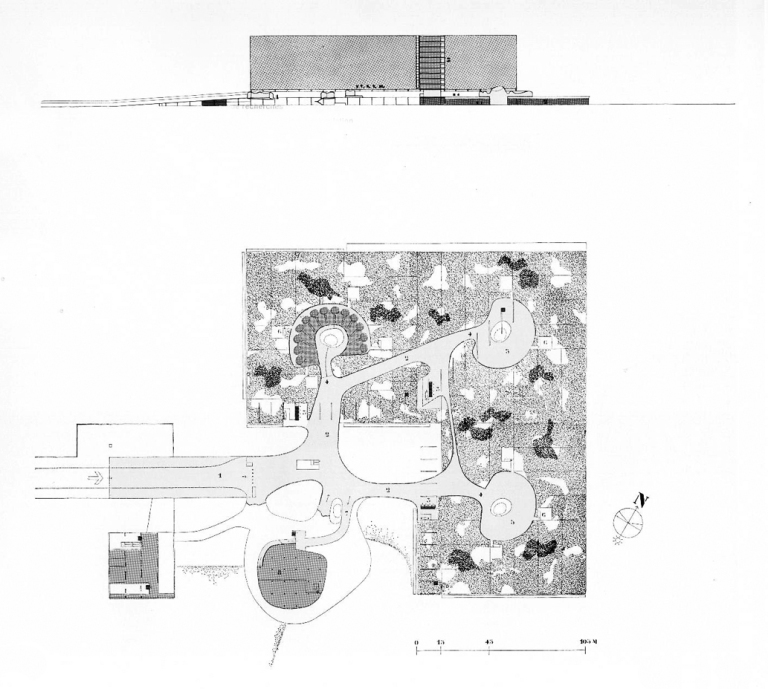
This was another popular blog post from the last year or so. Many readers contacted me to comment on the post. Most were in general agreement with the sentiments expressed in it. Re-reading it now, I am more emphatic in my thinking, and wonder how does a profession or a domain of knowledge expect to survive? Especially, if it gives no priority to educating its best and brightest about economics, finance, business strategy and management.
Down the gurgler is Australian slang for: down the plug hole; something has failed; wasted (as effort, money, etc.); ruined, destroyed.
Before you read this you may be interested in the:
SURVIVING THE DESIGN STUDIO: 2018 ARCHITECTS GLOBAL RESEARCH SURVEY.
At the 2106 ARCOM conference I attended I met a few other researchers working in the area of architectural services. One was from Western Australia and the other was from Delft. Delft is one of the largest and well regarded architecture schools in Europe. At Delft my friends there have a large EU research project looking at the nature of architectural services and their value. Whilst standing at our conference having a cup of tea one of them mused that architecture seemed to have a global ideology. I asked “What do you mean?” thinking that perhaps the counter is that architecture is something that is pretty much formed by what Kenneth Frampton called critical regionalism.
The great divide
She went on to discuss that no matter where you went in the world in architecture there was always an insanely stupid divide between the creative designer’s and the so called “business” people of architecture. At her architecture school the “in-crowd” of design professors turn there nose up and reject the so called “business side” of architecture. I agreed and then thought more about it. This divide is contributing to the demise of the profession. It prevents big practices from integrating knowledge and going upstream; it cripples small practices because they often do not have the business skills needed to make them sustainable.
It’s not real until it’s real syndrome
This divisive refrain has often been driven home to me in the architectural practice classes I teach at MSD. Every semester students question why we would do business plans in the class as part of the syllabus. Of course, when I talk to practitioners and I tell them we teach business planning in the class at MSD they say that’s awesome. When I tell they students this they don’t really care and they don’t really get it until they themselves become practitioners. Even when I say: “you will be more employable if you understand this stuff”, they still don’t seem to get it. It might be the it’s not real until it’s real syndrome.
The “practice” lecturer syndrome

How “design” architects see “business” architects
Also, as the so-called “practice” lecturer I constantly, get the impression, that in some way I am written me off as some kind of accounting value managing drone who hates architectural design because I have an MBA. Yet, I love Debord and Deleuze and Guattari and late Foucault just as much as the next theoretically inclined architect.

D & G
Of course, in other fields it is different. For example, in advertising, the dark heart of capitalism itself, the collaborative tensions between the creatives, the so called suits and the production people are acknowledged and managed well. Agencies still manage to produce great work that moves people and contributes to brand survival in the spectacle.

“Design” architect complete with mandatory jacket.
What exactly is the business side of architecture?
Thinking about it I am actually not sure what is meant by this. It is such a vague term and ideological prejudice. Does it mean you just want architects to make money (don’t we all want this?) Does it mean if you are “pro-business” you just do what aesthetically ignorant clients do? Does it mean you hate design and design processes? But just maybe actually, paying attention to the “business side” means architects need to pay attention to the following: Diversity, in our team structures, strategic positioning, innovation systems, knowledge management processes, technology implementation and how we respond to emerging forms of procurement.
Oh and there is that that other area of academic and professional study that is often ignored in architecture schools, and missing from our competency standards, also relegated to the “business” side: Leadership.
Long hours, price cutting and other structural problems of the profession
As the Sydney architect Clinton Cole eloquently argues, amongst other things, the profession is beset by a number of structural problems that impact on its well-being and competitiveness. He cites the “hugely entrenched cultural tendency to perform long hours” combined with truckloads of unpaid overtime, anomalies in charge out rates (Charging staff out at 40 hours per week but working more than this). As Clinton points out these practices disadvantage women in the profession. Or anyone else, for that matter, seeking a reasonable work life balance.
Oh and I forgot to mention the other structural problems such as fee competition (the persistent rumours about large practice cartels price fixing low fees) and the push in some quarters, even by some so called-architects themselves, to deregulate the word architect.
The need for industry research
Industry development backed by evidenced based research is the key to help architects argue their case. But, as far as I can tell the AIA has had no real research function for years. The Government Architect’s across Australia are also generally deficient in this regard. So it’s great to see the Association of Consulting Architects taking up this mantle and filling some of the basic research gaps with the fine work of Gill Mathewson.
As suggested above, there is a whole range of research areas, that architects could collectively pursue for the benefit of the public, policy makers and even their clients.
7 tips for bridging the divide despite the horror of small practice
Lets face it in small practice organising and scheduling time, managing cash flow, preparing marketing materials is extremely boring. But it is stuff that needs to be done. In larger firms, let alone any firm for that matter, strategic thinking, marketing and branding, HR and management policies that promote diversity and creativity are vital. So if you are a small or solo practice in the outer suburbs or inner suburbs of a large city. What do you do? How do you avoid the quagmire of overwork, high stress and the feeling that you are always reacting from crisis to crisis.
In my experience the following things are all definitely worth considering to bridge the divide.
- Don’t cut your fees just to get the job.
- Have a business plan even if it is only two pages long.
- Calculate charge out rates that allow for fair work hours and profit. Stick to them.
- Work on your business systems.
- Take the time to constantly market the value of design.
- Do what Google does and don’t work for half a day a week. Just think or meditate.
- Do some research that will help strengthen your knowledge base.
Unless a practice considers acting on the above 7 points it will always struggle.
Design value and design fees are positively correlated
Of course I fear, that if you mention business systems to one of those big name alpha-male architects that adorn the global system of architecture they look at you as if you some kind of pariah. They always leave it to someone else. As a result our profession is getting killed. It struggles to argue to clients why there is a direct relationship between design fees and design value. It struggles to shake off the overall prejudices that the broader public have about architects. More importantly, it is currently struggling to compete with other professions that claim to offer similar services.
The business-creative divide and corresponding global ideology has crippled architecture and threatens to hasten its further demise as a domain of knowledge. As a result the viability of architecture as an profession is increasingly at stake. Unless the divide is bridged we remain a naive profession full of poetic and narcissistic dreamers who are rapidly losing ground.

























 You don’t have to show everything.
You don’t have to show everything. 
 Avoid excessive realism.
Avoid excessive realism.